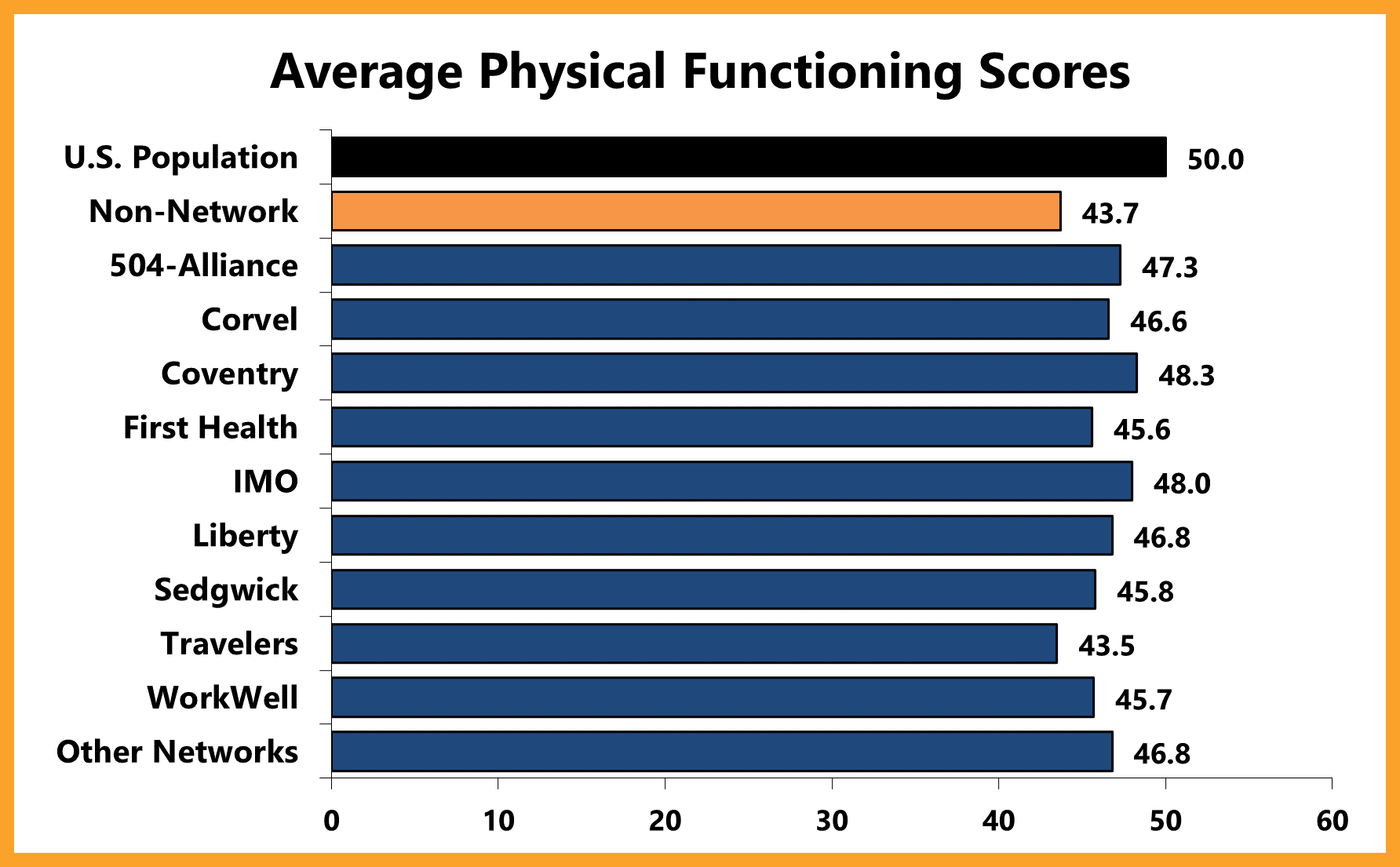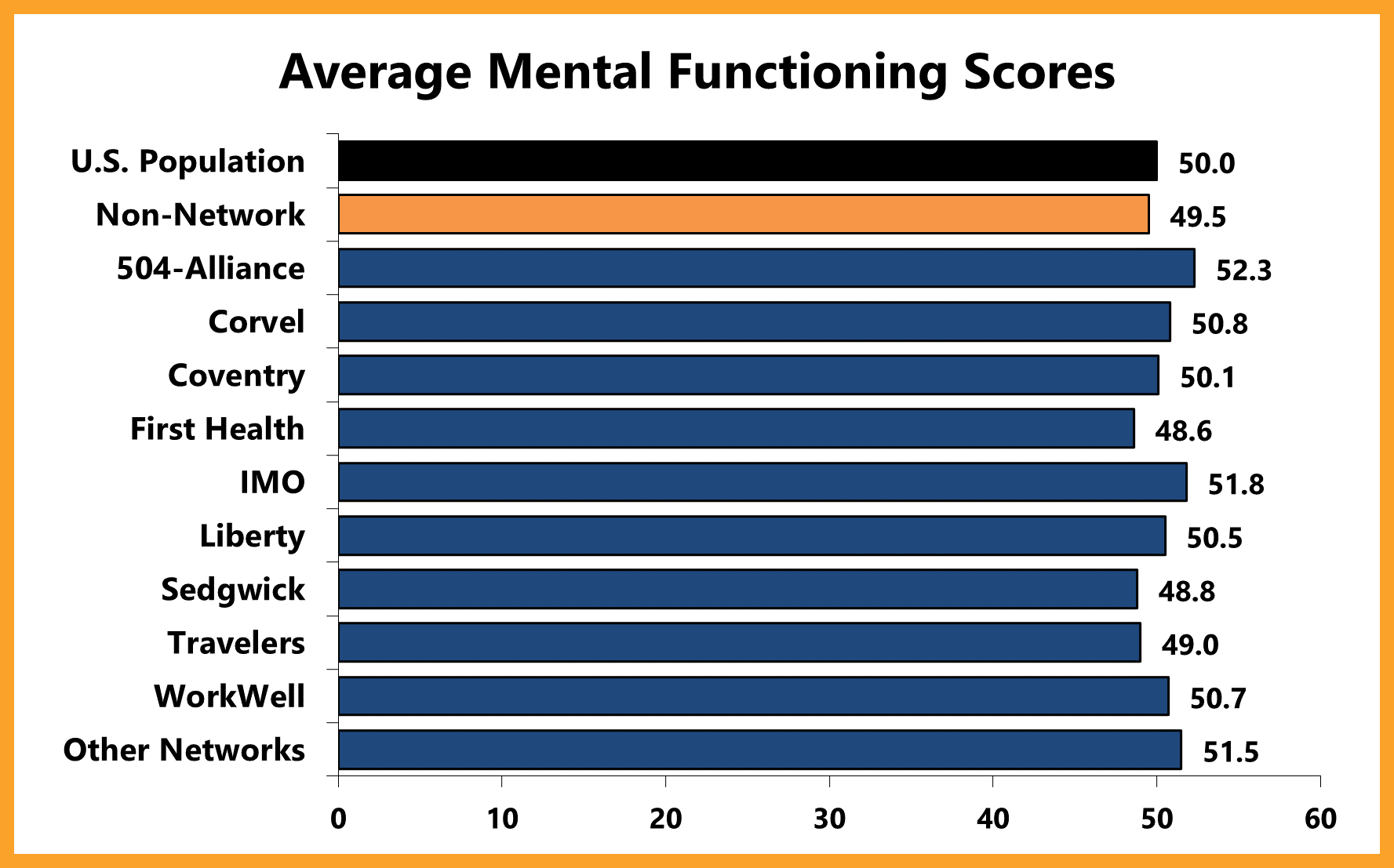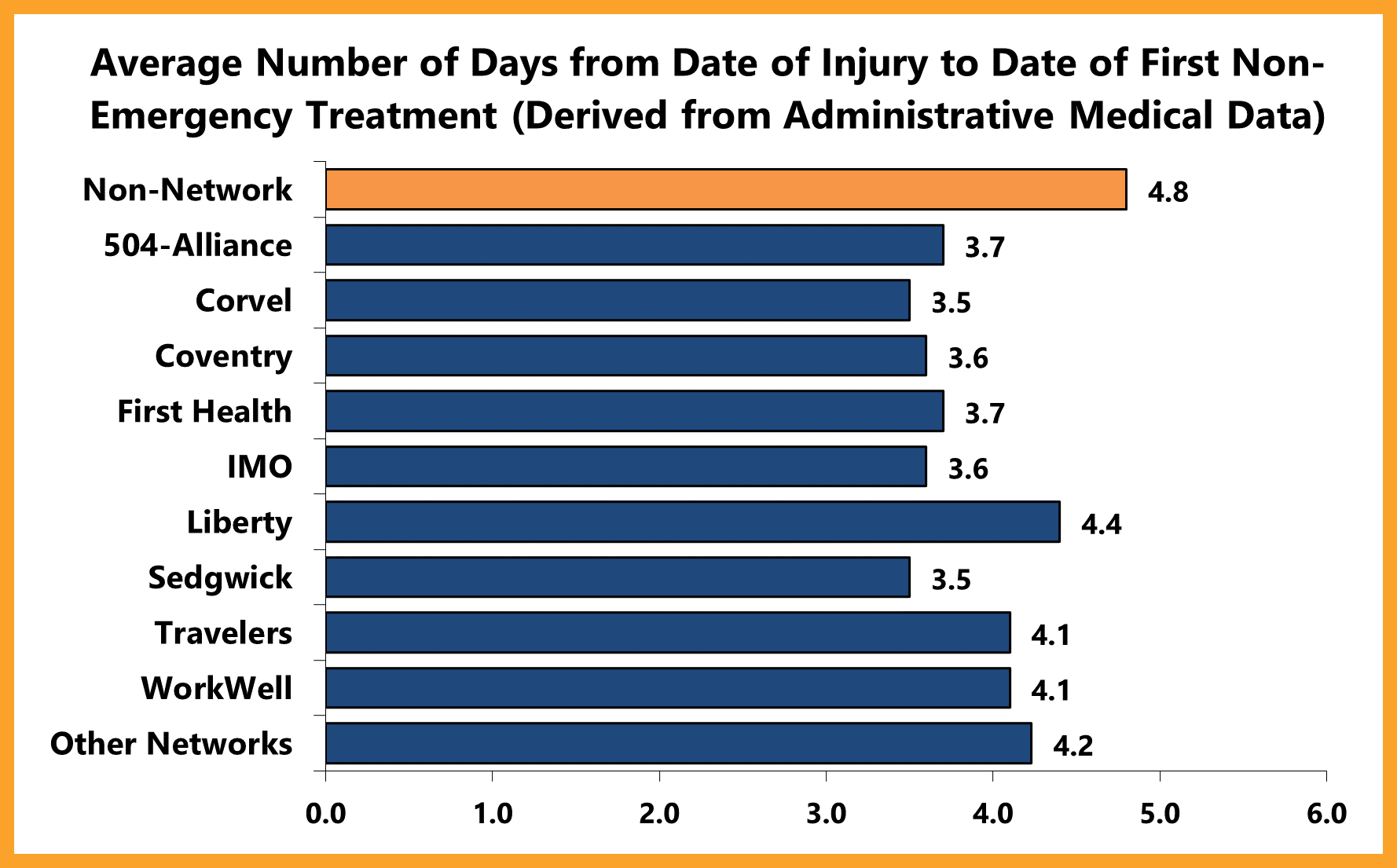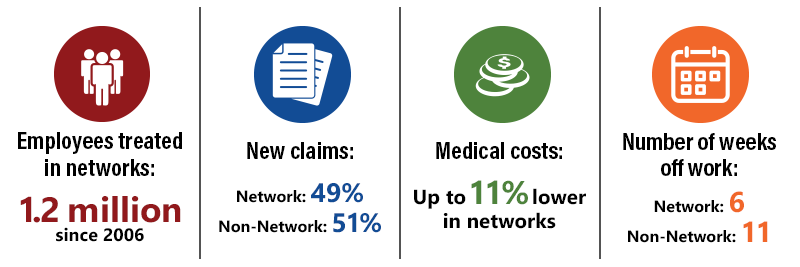
Key findings
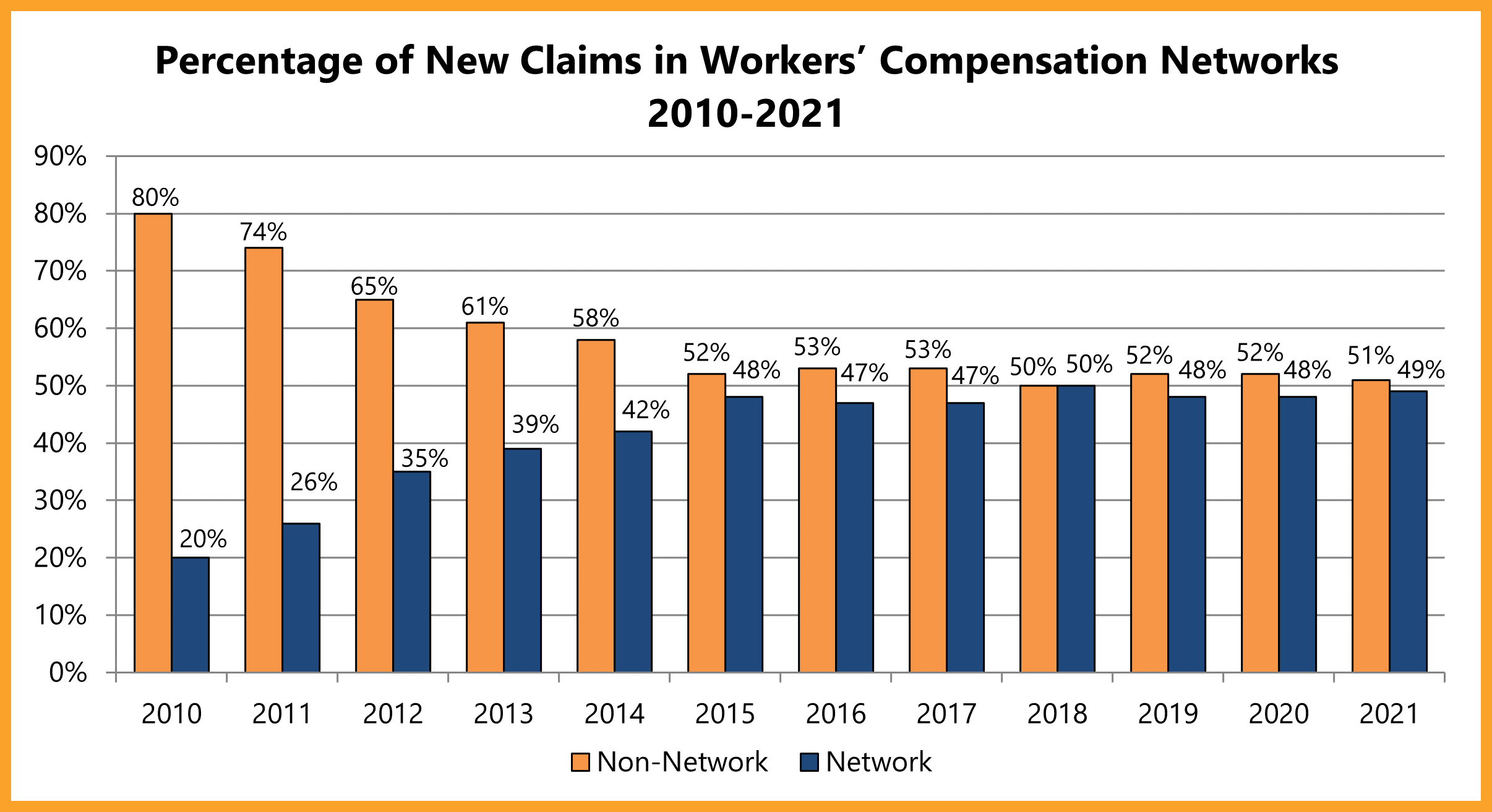
From 2010 to 2016, networks had higher average medical costs per claim for initial care, compared to non-network claims. Since 2017, non-network average medical costs per claim at six-months post-injury had been approximately 4 percent higher on average than network claims. The difference expanded to 7.5 percent in 2021.
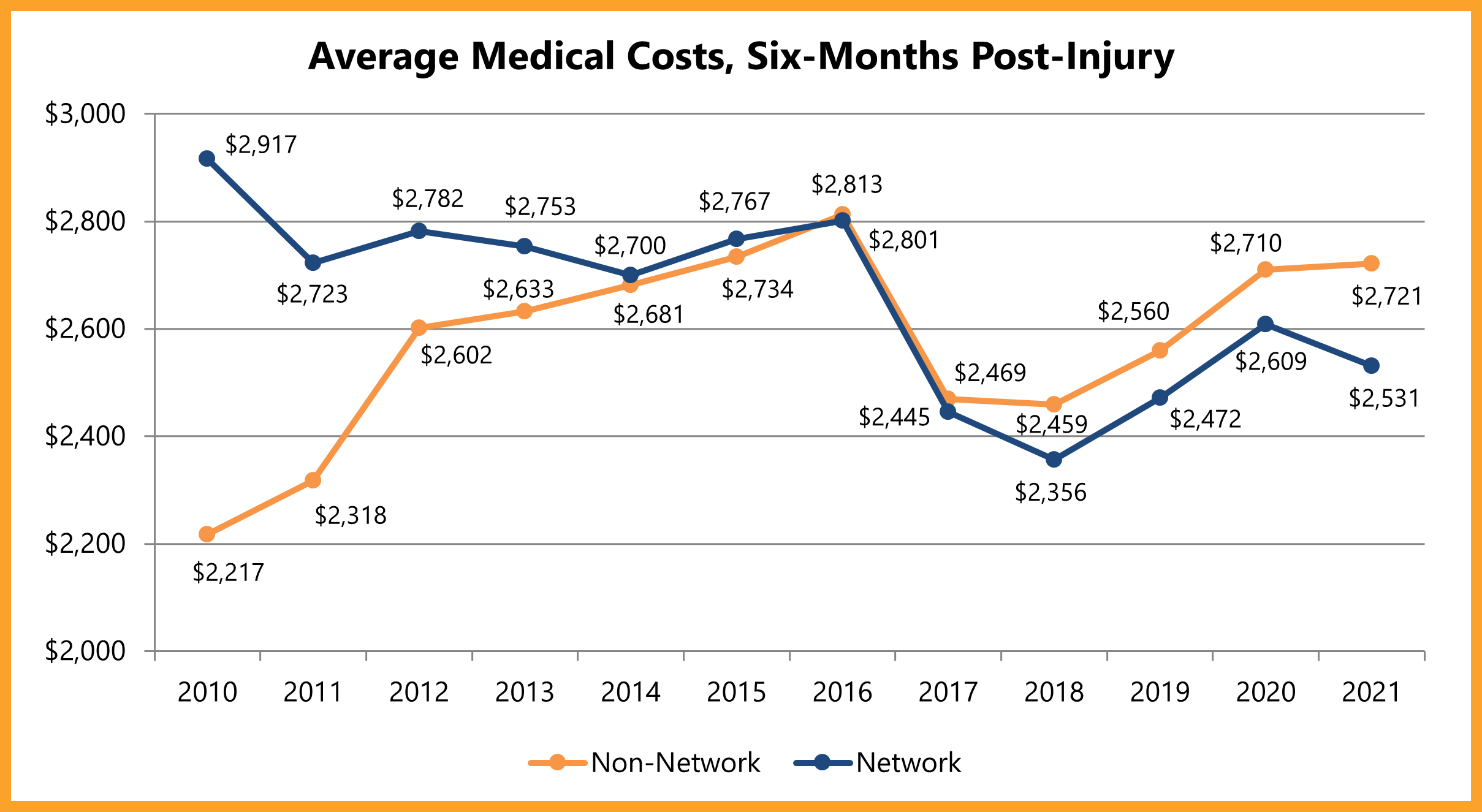
The medical cost gap widened between network and non-network claims at 18-months post-injury (using claims from the previous report card). Network medical costs were about 11 percent lower per claim at 18-months post-injury compared with non-network claims.
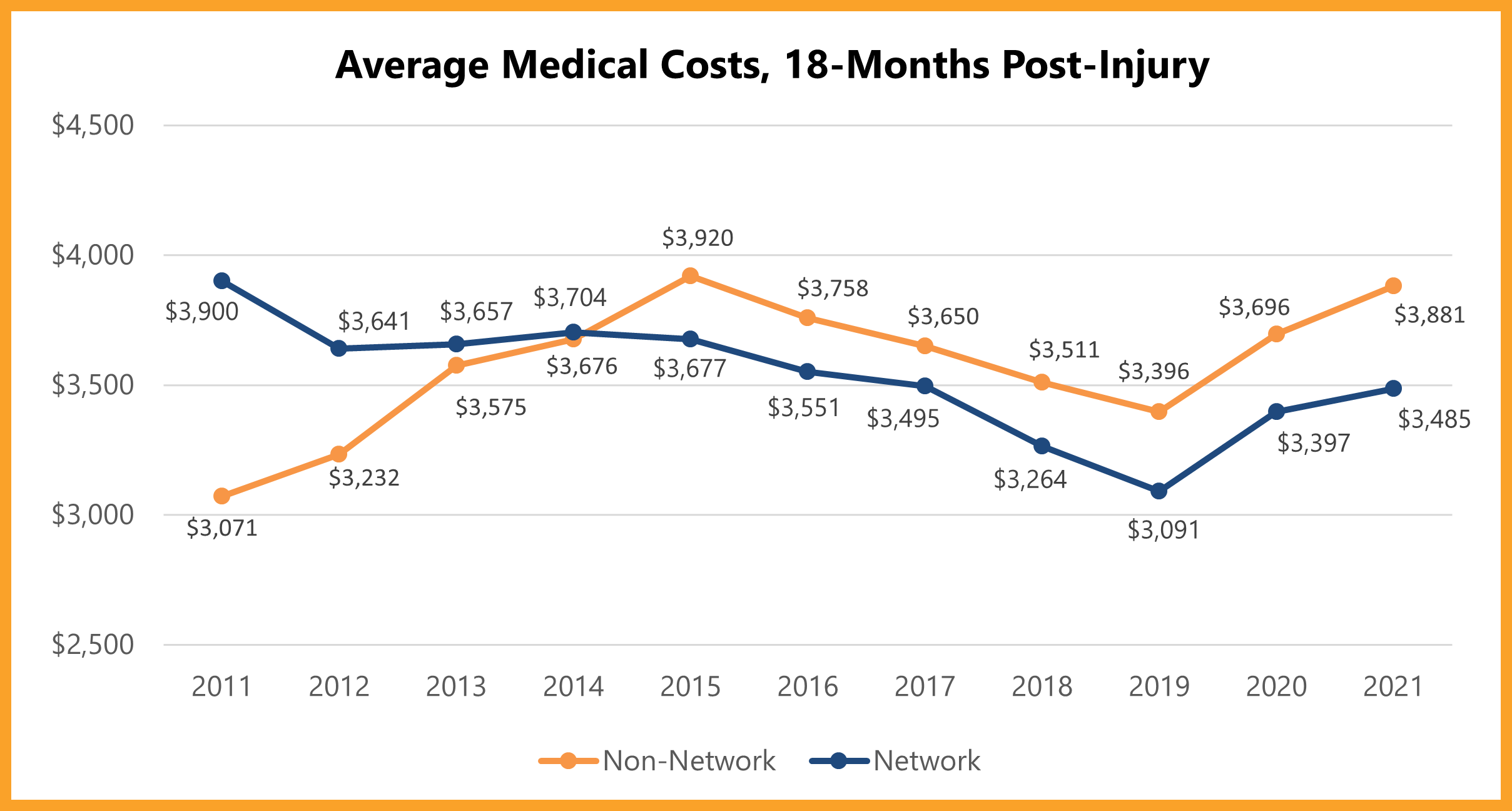
Since 2012, network claims consistently report higher return-to-work rates than non-network claims.
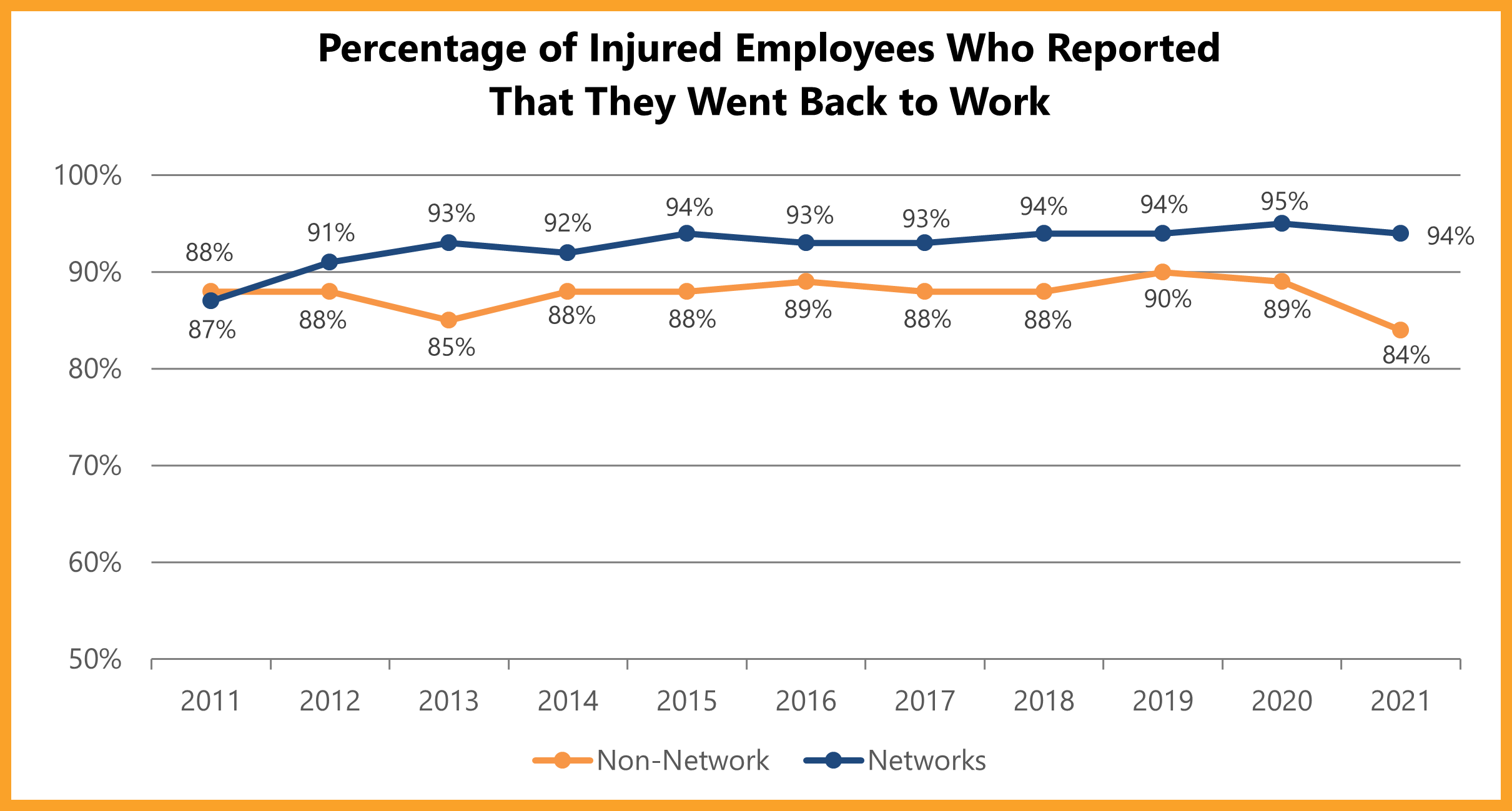
Physical functioning measures a person’s ability to do everyday tasks. Mental functioning measures a person’s ability to think and reason.
In 2021, network claims mostly reported higher physical and mental functioning scores than non-network claims. This generally means that injured employees who received network medical care reported better physical functioning and quality of life outcomes than non-network injured employees.
